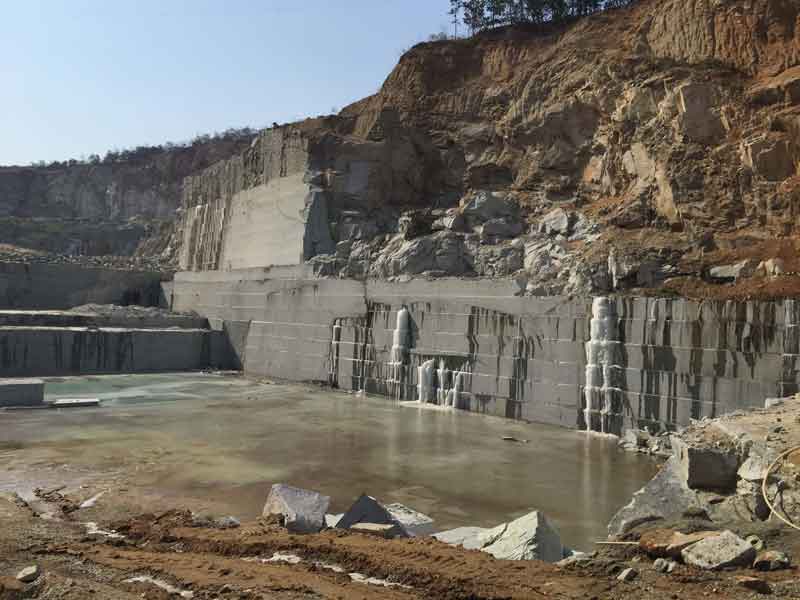The Surprise Treasures: Checking Out Granite Quarries in South Africa
The Surprise Treasures: Checking Out Granite Quarries in South Africa
Blog Article
Uncovering the Rich History and Sustainable Practices of Granite Quarrying
As we depend on the precipice of uncovering the detailed tapestry of granite quarrying, a journey with time reveals not just the physical act of removing stone however additionally the cultural and historic significance woven right into the really fabric of this method. From the old origins that laid the structure for modern quarrying methods to the lasting methods that are forming the future of this industry, each sculpt mark on granite surface areas tells a tale waiting to be unearthed (granite quarries in south africa). The heritage of granite quarrying stretches far beyond simple removal; it is a testament to human ingenuity, strength, and the long-lasting attraction of this majestic stone
Old Origins of Granite Quarrying
Dating back to old worlds, the technique of quarrying granite has been an indispensable component of human history and architectural innovation. The earliest proof of granite quarrying dates back to ancient Egypt, where enormous pyramids and complex sculptures were crafted from this sturdy rock. The Egyptians utilized primitive tools to remove granite blocks from quarries, showcasing the significance of this material in their significant buildings.
Relocating ahead in background, the Greeks likewise made considerable payments to the quarrying of granite. The Greeks utilized granite in different architectural marvels, such as temples and statues, demonstrating their skill in shaping and sculpting this durable rock. The Romans better improved the strategies of quarrying granite, utilizing sophisticated tools like chisels and hammers to extract and form granite for their legendary frameworks.
Via the centuries, the method of quarrying granite has developed, with modern innovations boosting performance while keeping the ageless appeal of this natural rock - granite quarries in south africa. From old worlds to contemporary builders, the heritage of granite quarrying proceeds to form our world
Evolution of Quarrying Strategies
The development of quarrying methods has been noted by a constant progression in the direction of better effectiveness and precision in extracting granite. From the rudimentary approaches utilized by our ancestors to the innovative innovations utilized in modern-day quarrying operations, the sector has actually gone through significant innovations. Early quarrying methods entailed manual work with standard devices such as knives, hammers, and wedges to remove granite blocks from the planet. As civilizations progressed, methods like fire-setting and primitive dynamites were introduced to assist in the removal process.
In even more recent times, the development of equipment transformed the quarrying sector, enabling quicker removal prices and enhanced efficiency. Technologies such as ruby wire saws, high-pressure water jets, and pneumatic drills have actually come to be conventional in modern-day quarries, permitting accurate cutting and minimized waste. Improvements in computer-controlled tools and 3D modeling have actually optimized quarrying operations, leading to very little ecological impact and improved sustainability methods. As the demand for granite remains to climb, the advancement of quarrying strategies remains integral to meeting industry needs efficiently and sustainably.
Social Relevance of Granite
Granite holds an extensive cultural significance throughout different worlds due to its long-lasting existence in building masterpieces and revered monoliths. The cultural relevance of granite extends past its physical characteristics; it embodies durability, security, and timelessness, making it an icon of withstanding heritages and customs.

Lasting Practices in Quarrying
In the middle of the rich background of granite quarrying and its social importance exists an expanding emphasis on lasting methods within the industry. As ecological understanding and concerns concerning resource deficiency have actually heightened around the world, the quarrying market has increasingly welcomed sustainable methods to lessen its effect on the environment and bordering neighborhoods.

Furthermore, reclamation and rehabilitation reference of quarry sites post-extraction are integral to sustainable methods. By bring back quarried locations to an all-natural or helpful state, such as developing wild animals habitats or recreational spaces, quarriers can offset the ecological impact of their procedures and contribute positively to the local ecosystem.
Legacy of Granite Quarrying
With a historic background steeped in craftsmanship and commercial development, what enduring impact has granite quarrying left on the landscape of modern culture? The tradition of granite quarrying transcends mere removal methods; it has formed building marvels, city landscapes, and social heritage worldwide. The resilient nature of granite has made it a recommended option for monuments, buildings, and framework, standing as a testimony to the skill and virtuosity of quarry employees across generations.
Moreover, the financial footprint of granite quarrying can not be neglected. The industry remains to offer employment possibility and drive neighborhood economic climates in regions where granite removal is common. It has likewise spurred technical developments in quarrying strategies and devices, leading to extra effective and lasting methods.
In terms of sustainability, the tradition of granite quarrying consists of efforts to minimize environmental impacts with recovery projects and liable resource administration. By balancing economic passions with environmental stewardship, the Read More Here market makes every effort to ensure that future generations can continue to profit from this long-lasting natural source.
Verdict

Report this page